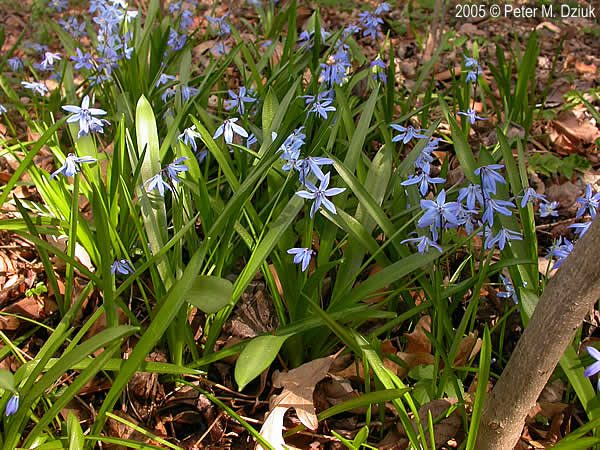Siberian Squill, Scilla siberica

(Scilla siberica) Bloom Time: Spring (March – May) Location: prefers part-sun, open woods, roadsides, gardens and frequently disturbed grassy areas. Presently not widespread in Minnesota, and is consigned for the most part to the western side of the state (general). Found primarily in the Upper Arb in the woods around Spring Creek and the Lyman Lakes. A common sight in the neighborhoods around the Carleton campus (Arb). Family: Lily (Liliaceae) INVASIVE Physical Description: flowers are typically single at the top of a leafless stem, but there occasionally more. Composed of six flaring blue petals around six white stamens with dark blue tips. Flowers are bell-shaped when in the process of opening. Basal leaves resemble grass, and up to 5 in. long. Plant gets to be 3-6 in. high. This plant is an incredibly aggressive invasive from Russia, brought to North America as an ornamental and escaped cultivation. The bloom’s fragrance is attractive to bees, but its utility to other fauna is low.



